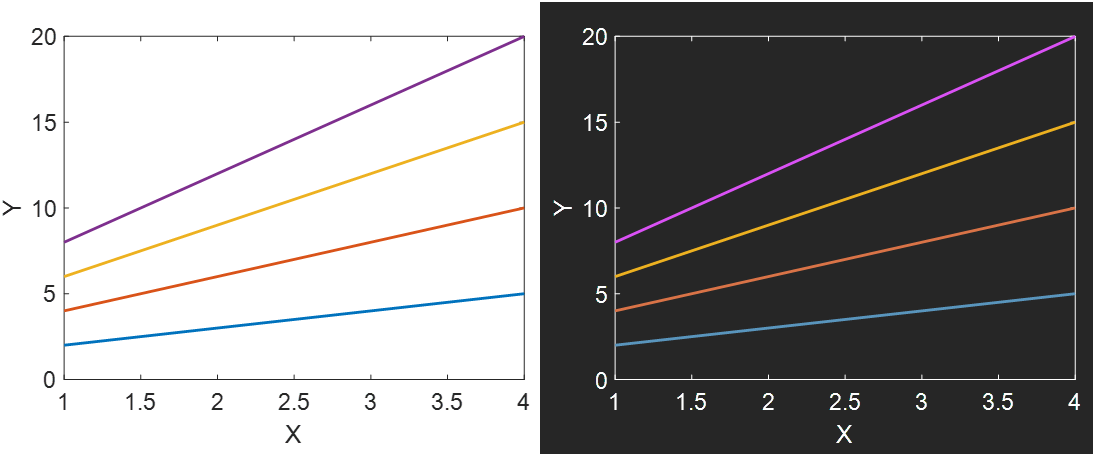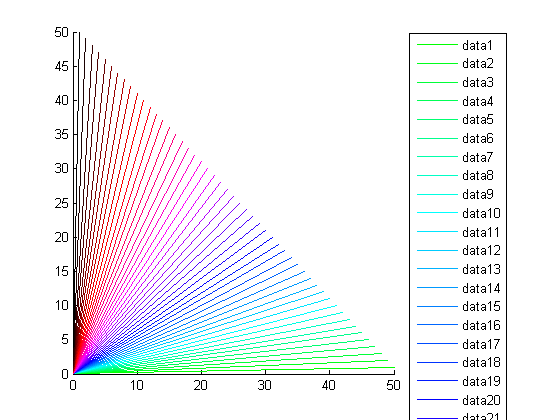
Here we discuss an introduction to Matlab Plot Legend with appropriate syntax and respective programming examples. Labels become very important when we plot multiple functions in the same graph. We also learned to set the ‘direction’ and ‘Name’ of the label box as per our needs. This is particularly useful if you need to obtain accurate information about where two graphs intersect, or to find the coordinates of an extreme point.
#MATLAB PLOT HOW TO#
We learned how to create labels in MATLAB plots and also how to achieve desired styles. MATLAB provides an interactive tool to expand sections of a plot to see more detail.

Legend (,'Location','northwest')Įxplanation: As we can notice in the output, our label box is now named. You can mix Xn,Yn,LineSpec triples with Xn,Yn pairs: plot(X1,Y1,X2,Y2,LineSpec,X3,Y3).
#MATLAB PLOT CODE#
All we need to do is pass the pre-defined code for the direction, as an argument. plot(X1,Y1,LineSpec.) plots all lines defined by the Xn,Yn,LineSpec triples, where LineSpec is a line specification that determines line type, marker symbol, and color of the plotted lines. It is often very easy to 'see' a trend in data when plotted, and very difficult when just looking at the raw numbers. Legend function in MATLAB allows us to put our label in place of our choice. The plot function in Matlab is used to create a graphical representation of some data. Next, what if we don’t want our labels to be on the top right but in some other place on the plot. Here, we can name our functions as per our needs.Įxplanation: Notice on the top right side of the plot, we have got the names of our functions. In addition to the above code, we will add the below-mentioned line:Īs we can see, we have passed the name of the functions as an argument to our legend function. Our initial code will be the same as in the above example Now, what if instead of ‘data1’ and ‘data2’, we want to have the name of the function as the label.

Since nothing was passed as an argument to legend function, MATLAB created labels as ‘data1’ and ‘data2’. This is how our input and output will look like in MATLAB console:Įxplanation: As we can see in the above output, we have plotted 2 vectors and our legend function created corresponding labels. Our inputs A, B& C are first passed as arguments to the function ‘plot’.Īnd then we simply write ‘legend’ in our code to get the labels. Now to understand how ‘Legend’ works, we will first plot our input functions and then use the function ‘legend’. Next, we will define B as the cos function of values of A and C as sine function of values of A We will define an increment of π/50 between these values. Let us understand the function with an example: Example #1įirst, we will define ‘A’ as a vector containing values between 2pi (π) and 3π. The function ‘legend’ will create labels like ‘data1’, ‘data2’, and so on.

#MATLAB PLOT SERIES#
, L N), where L1, L2 and so on represents the respective labels.Įxplanation: This function will create a legend for each data series used in the plot, with descriptive labels. Hadoop, Data Science, Statistics & others


 0 kommentar(er)
0 kommentar(er)
